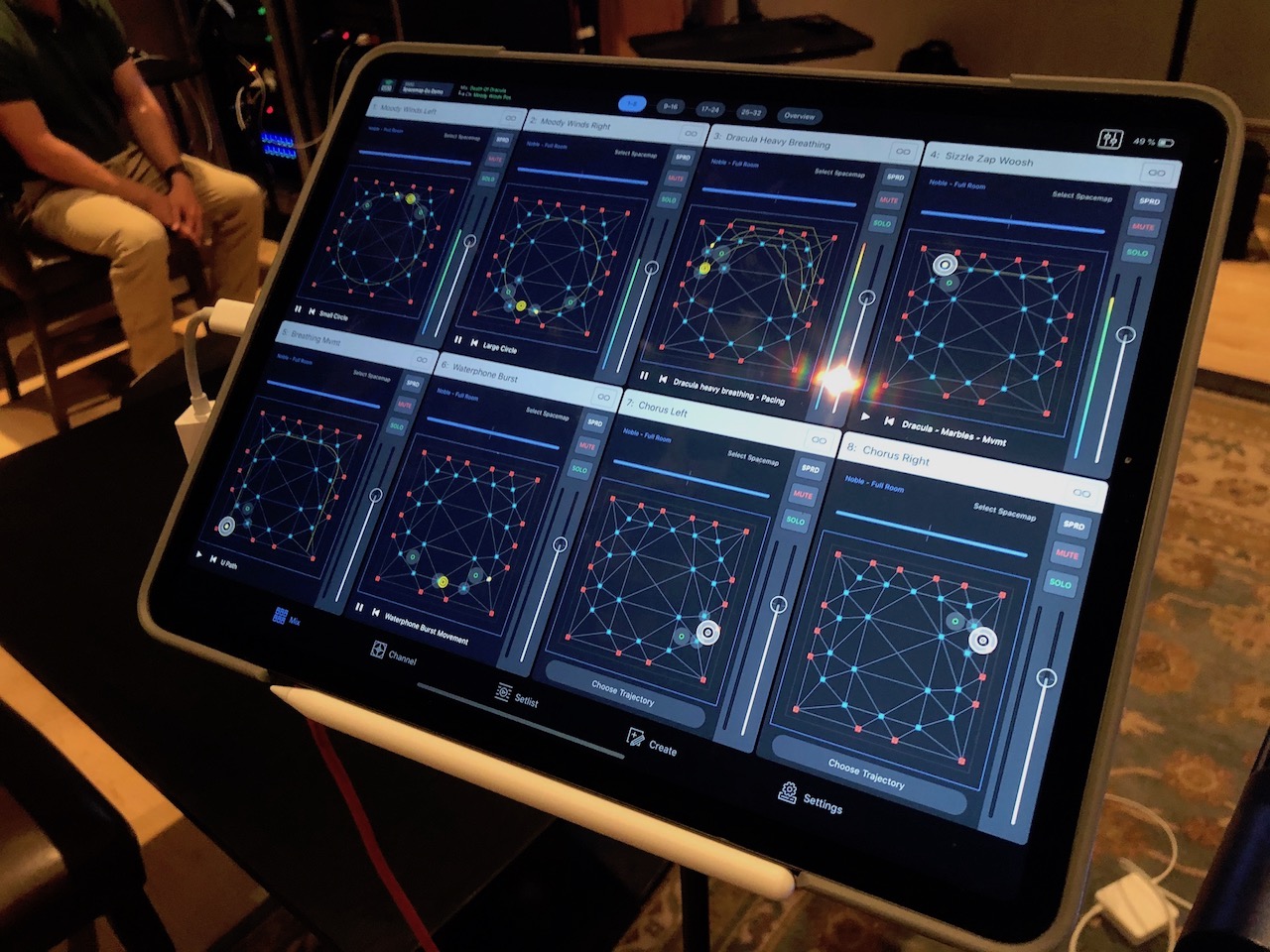Testing Out Meyer Sound’s Revolutionary Spacemap Go Spatial Sound Tool

It’s going to take some doing to get people back out to entertainment venues once the pandemic is behind us. It’ll require an enticing experience they can’t get at home—something like a captivating immersion in spatial sound.
To help venues deliver this, Meyer Sound released Spacemap Go, an iPadOS app that offers a revolutionary new way of experimenting with sound. Available through a free app download and firmware update on the 4,000-odd GALAXY systems already installed in the field, the system can be controlled by a single iPad or with multiple iPads—enabling the creation of on-the-fly and pre-programmed sound shows by operators with nearly any technical background.
Related: Audio's Next Frontier: 3D Soundscapes
To get a better idea of just how powerful and intuitive the tool is, I dropped by the company’s demo setup in a rehearsal room at Jazz at Lincoln Center in New York. I walked into a space decked out with speakers—24 lining the perimeter at ear level and four hanging overhead—mounted on trusses, providing an enveloping bubble of audio. In the center of the room was an iPad on a stand, connected to a mixer controlling two GALAXY 816 processors.
The demo began with a pre-programmed sequence using sound effects designed by Tony Award-winning sound designer Leon Rothenberg for a theatrical performance of Dracula. The Spacemap Go software on the iPad displayed eight panels corresponding to the different tracks in the production, each showing an overhead map of the speaker layout and the location of its respective source. For tracks that moved about the room, the path between speakers was clearly drawn: a “moody wind” whistled around the space in a neat circle, and Dracula’s “heavy breathing” arced back and forth across the speakers on the front half of the room. Upon pressing play, the source dots glided about on their paths as the sound enveloped my ears.

To show off the real-time operation of the system, the Meyer Sound team queued up a vignette of a battle scene. “War ambience” tracks were set on a loop at opposite corners of the room, and a helicopter was placed overhead. I was invited to experiment with the movement of the chopper: Using a stylus I dragged the source about the Spacemap, resulting in the instantaneous movement of the sound. I dragged it toward the front of the room, and the sound hovered at a spot between the lower ring of the speakers and the height channels. The process was incredibly satisfying and couldn’t have been more intuitive.
According to John Monitto, director of business development and sales manager at Meyer Sound, Spacemap Go allows sound designers to create dynamic immersive environments with GALAXY processors that previously would have required significantly greater investment with the company’s D-Mitri processors—plus a lot of technical programming. Positioned for use in theatre, concert halls, houses of worship, and specialized settings like theme parks and planetariums, Spacemap Go gives operators of nearly any ability the tools to shape sensational aural environments with very little training. Further, while the system is capable of working with as many as 32 inputs, it can be employed in setups with as few as just two , and between eight and 256 outputs—creating possibilities for inventive sound design for nearly any application.
A daily selection of features, industry news, and analysis for AV/IT professionals. Sign up below.
Further Details
Per Meyer Sound, Spacemap Go offers compatibility with popular sound design and show control programs such as QLab. For example, a complex sound design can be assembled using QLab in the studio, perhaps initially combining all multichannel cues into a stereo rough mix for reference. When on site, the tracks can be quickly expanded into a multichannel spatial mix using Spacemap Go’s templates for common multichannel configurations. The templates can be customized for a particular setup, while panning trajectories can be created with the touch of a finger, and if desired, captured for playback during performance. Although spatial trajectories can be created, edited, and stored using the graphical interface, the detailed matrix remains immediately accessible for reference or direct data entry.
In addition to QLab, Spacemap Go can be automated by popular DAWs such as Ableton Live, Logic Pro X, Pro Tools, Digital Performer, and Reaper, taking advantage of the iPad’s multi-touch interface for effortless spatial automation. GALAXY now supports the RTTrPM protocol, allowing integration with real-time tracking systems such as BlackTrax.
Systems are configured by Spacemap Go using any combination of GALAXY 408 or GALAXY 816 using Milan AVB, AES3, or analog as inputs and outputs. Spacemap Systems can be configured for up to 32 inputs and as many outputs as are provided by the processors. Each GALAXY provides up to 232 matrix crosspoints. Multiple iPads may be used to control a system, providing immediate access to additional channels or allowing simultaneous access to different screen views.
Spacemap Go is available as a free download from the Apple App Store. Spacemap Go is compatible with any iPad capable of running iPadOS version 13 or later.
Matt Pruznick is the former editor of AV Technology, and senior editor for Systems Contractor News and Residential Systems. He is based in New York.

